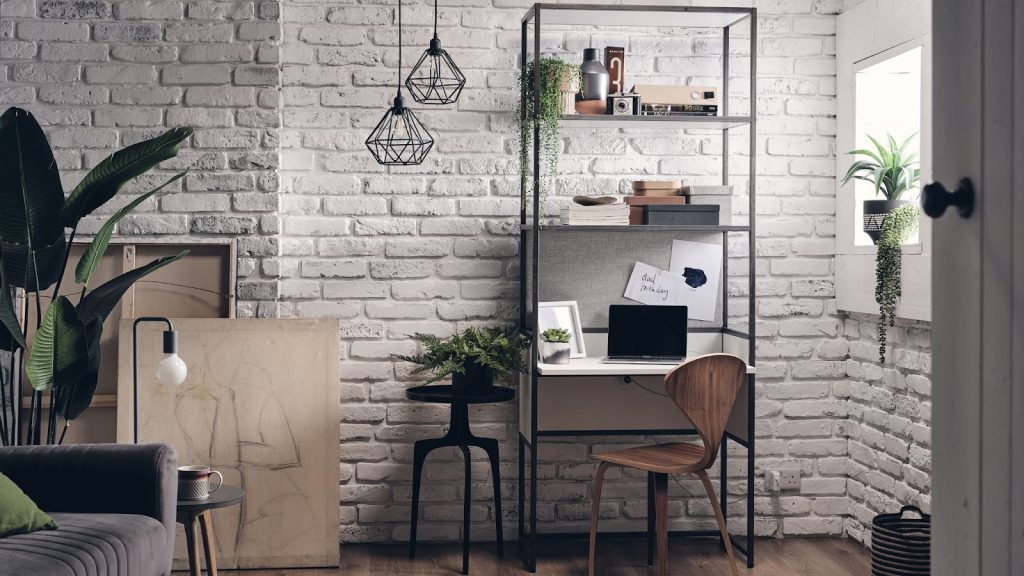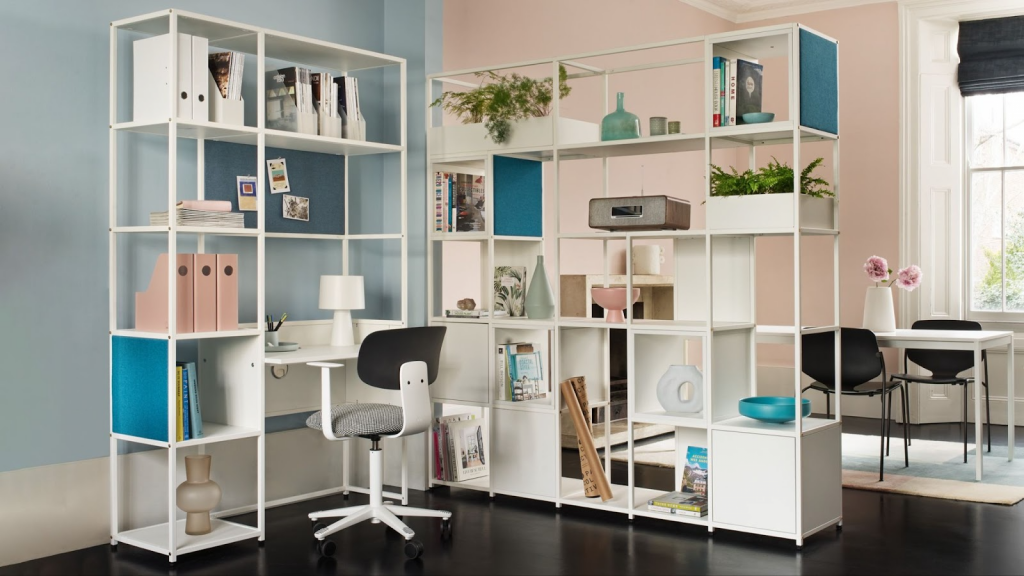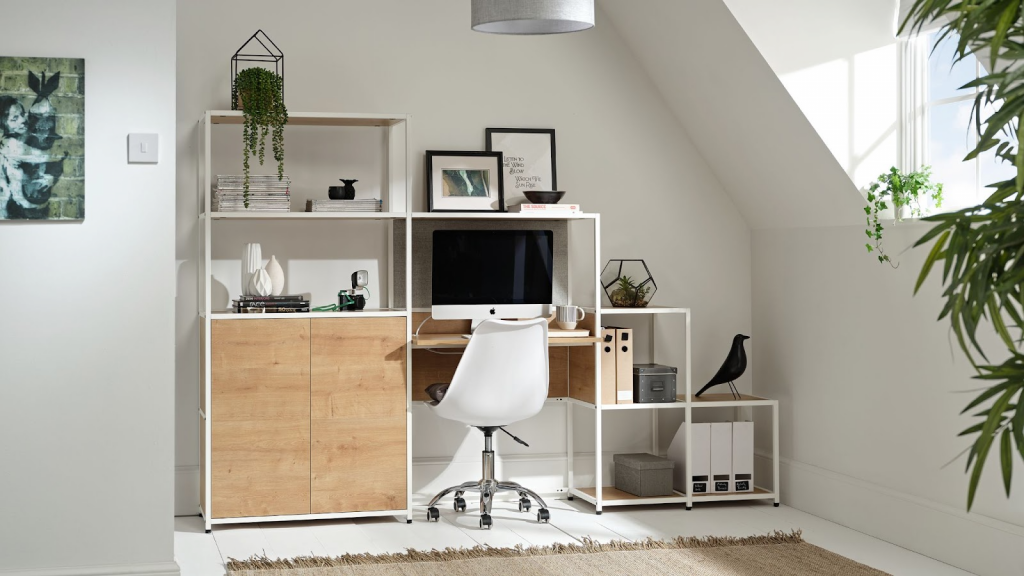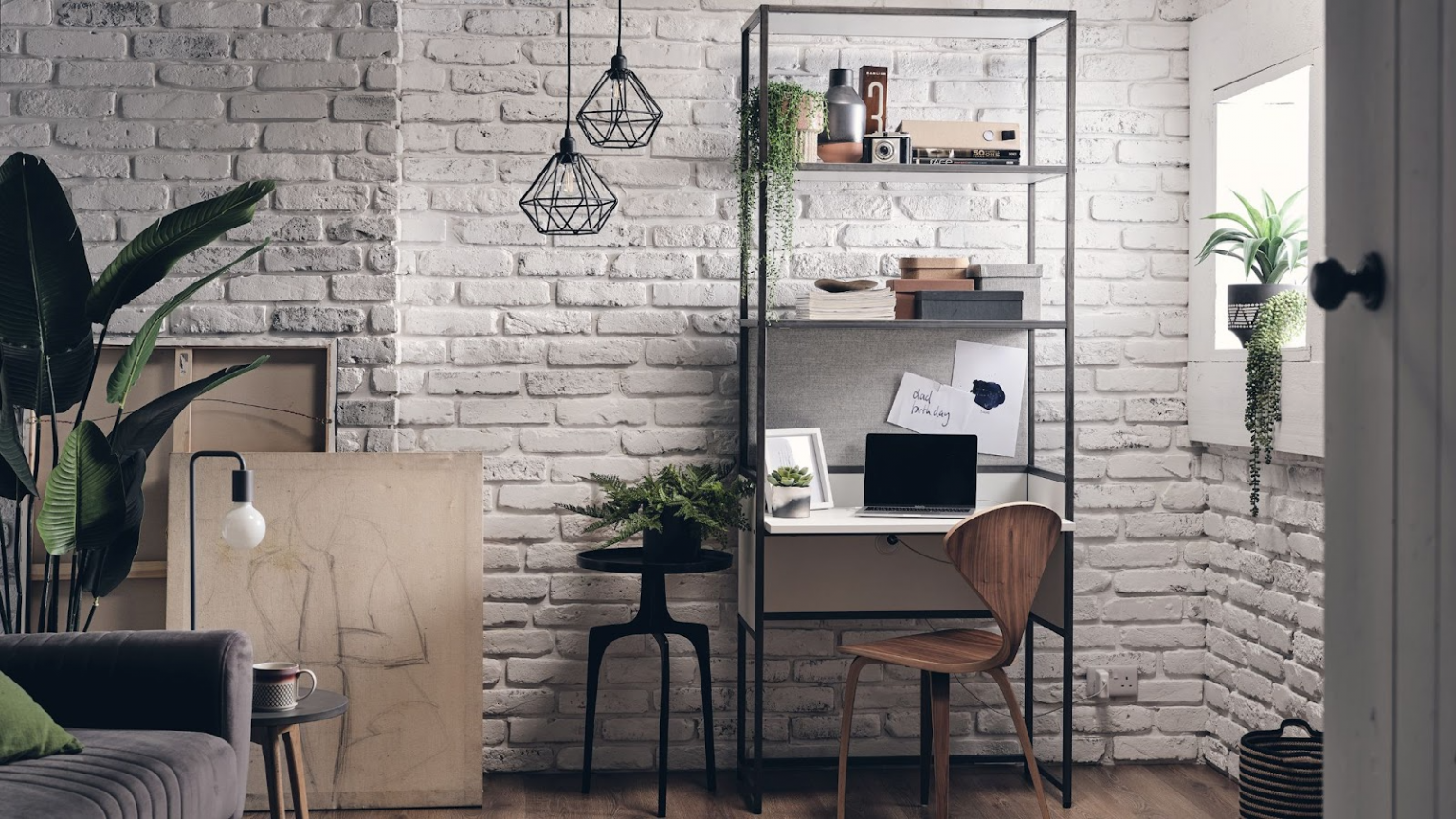According to Pinterest’s Autumn trend report, “cubicle chic” is on the rise — a design trend rooted in nineties nostalgia, but reimagined for today’s hybrid work culture. With many of us back in the office part-time post-COVID, businesses are increasingly opting to reconfigure existing spaces rather than relocate, creating work zones that feel more personal, flexible, and productive than ever before.
So, what’s behind the return of the cubicle, and how can businesses embrace the look without stepping back in time? The design experts at Shelved are here to break down the trend and share practical tips for incorporating it in the modern workplace.
Cubicle chic: What it is and why it’s trending

Cubical chic is a modern take on the classic nineties office layout. While that might evoke memories of drab beige dividers, clunky monitors, and endless rows of filing cabinets, this version comes with a serious upgrade. Think modular desks with sleek, built-in storage, and soft partitions that allow for a sense of personal space without sacrificing collaborative working.
This look is resonating with the new wave of Gen Z professionals, many of whom grew up with remote work culture and are now romanticising the pre-digital office era.
But the trend is about more than just nostalgic styling. It reflects a desire for structure, privacy, and ownership in the workplace — things we’ve come to appreciate while working from home, but often miss in open-plan offices. As more of us return to the office, the trend promises the best of both worlds: the energy and collaboration of shared spaces, paired with the comfort and focus that come with having your own defined area.
Why the return of the cubicle makes business sense

Beyond its popularity on social media, the cubicle chic aesthetic aligns with broader workplace trends. According to a recent report by Irwin Mitchell:
-
Almost half of businesses now require employees to be in the office three to four days per week.
-
42% would like to modify their existing office layouts to better support those returning, with changes ranging from individual pods and quiet zones to improved collaboration areas.
-
44% of businesses looking to expand would prefer to reconfigure their current space rather than relocate.
These findings highlight a demand for flexible, multifunctional layouts — workspaces that offer space for focused solo work while also supporting socialisation and collaborative working.
Reconfiguring offices into multifunctional spaces can help businesses:
-
Support hybrid and flexible working more effectively
-
Improve focus and productivity in shared spaces
-
Create distinct areas for collaboration, focused work, and virtual meetings
-
Give employees more opportunities for personalisation and comfort at work.
It’s a cost-effective, minimally disruptive way to adapt a workspace, giving teams the structure they need without compromising on style or requiring a full-scale redesign.
Tips for embracing cubicle chic in the workplace
Cubicle chic isn’t about creating rows of identical cubicles. The key is to create smart, flexible layouts that balance style with functionality.
Here’s how you can nail the trend in your workplace:
-
Use modular shelving to define spaces: Open shelving units or cube-style dividers can help break up open-plan spaces into distinct work zones, without making the space feel closed off or cramped. They also double as valuable storage and display space.
-
Keep boundaries soft: Open shelving, light or white wood, and felt partitions help soften the look while maintaining the feel of a zoned workspace.
-
Embrace personalisation: A touch of individuality goes a long way in boosting team morale. Encourage team members to personalise their own zones with photos, plants, pinboards, and accessories.
-
Add multi-functional storage: Opt for storage that works hard, like bench seating with built-in compartments, stackable cube units, or shelving that can be easily reconfigured.
-
Design for collaboration: Cubicle layouts don’t have to mean isolation. Create breakout corners and semi-private spaces using modular dividers. Here, teams can meet, collaborate, or jump on calls without disrupting others.
How to make it work at home

While the trend is rooted in the workplace, the cubicle chic look can work surprisingly well at home, especially for those juggling part-time office attendance with remote days.
-
Choose compact, modular desks with built-in storage to minimise clutter
-
Use vertical shelving to zone off a small area in an open-plan space
-
Add soft partitions to create a clear divide between work and living areas
-
Lean into the aesthetic with a coordinated desktop setup. Personalised stationery, a corkboard filled with photos, or motivational posters all help channel the vibe.
“Cubicle chic might be inspired by the past, but it’s rooted in the future of work. As businesses continue to adapt to hybrid schedules and employees’ changing expectations, office spaces are evolving, too — with a new focus on practicality, function, and comfort.
“By incorporating modular layouts, flexible furniture, and smart storage solutions, businesses can embrace the structure the traditional cubicle provides, without sacrificing functionality and modern style.”
— Jonathan Clark, Creative Director at Shelved

